Today the site of Fort Apache is an Arizona State Historic Park located off Arizona State Hwy 73. The site of Fort Apache is in the White Mountains of Arizona about 190 miles north of Tucson and about 177 miles northeast of Phoenix. The fort is also four miles south of Whiteriver Arizona in a very scenic and pine forested part of the state.
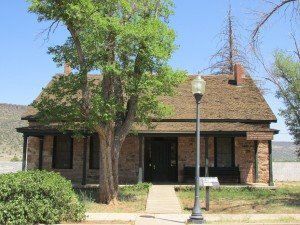
It’s a fun and educational stop during your Arizona vacation road trip and one of Arizona’s finest historic landmarks. You’ll also find several other historic sites within a thirty mile radius.
Fort Apache
Fort Apache was a major outpost during the Apache wars (1861-1886) and remained a military post until 1922.
Today, the 288 acre site is comprised of 27 buildings dating between 1870 and 1930. Buildings include a guardhouse, officer quarters, stables and dormitories. Also included is the White Mountain Apache Cultural Center and Museum.
The museum features an exhibit about the legacy of Fort Apache and an exhibit “Footprints of the Apache”. Many very interesting photos and artifacts make this a must see during your Arizona vacation. It’s one of the most historic of Arizona State Parks and it’s an ideal family road trip destination.
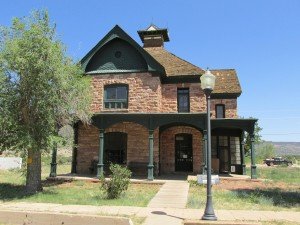
Some may even remember the 1948 John Ford directed film Fort Apache starring John Wayne, Henry Fonda and Shirley Temple. The film involves an honorable and veteran war captain who finds conflict when his regiment is placed under the command of a young, glory hungry lieutenant colonel with no respect for the local Indian tribe.
The Battle of Fort Apache
The Battle of Fort Apache took place on September 1, 1881. It was an engagement between the cavalry of Fort Apache and dozens of mounted White Mountain Apache’s. The attack on Fort Apache was actually a reprisal for the Battle at Cibicue Creek in which a notorious medicine man had been killed along with a cavalry officer.
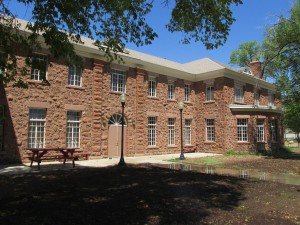
The Fort Apache battle lasted all day but the Apaches more or less stayed outside of the range of the cavalry riflemen. Reinforcements arrived a few days later but by that time the Apaches had scattered into hiding.
Only three American soldiers were wounded and White Mountain Apache casualties were unknown. While the battle itself was not large in scope, it’s repercussions were.
After the battle other groups of Apaches left their newly formed reservations. They either escaped to northern Mexico or joined Geronimo and other Apache leaders in their war against the whites, both military and civilian. Many innocent people were killed in this running conflict. Geronimo was to later surrender at Skeleton Canyon New Mexico in1886. This represented the ending of the Apache Wars.
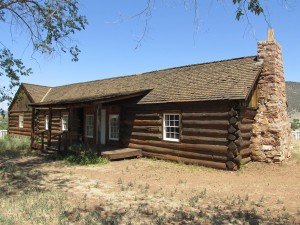
The Great Indian Leaders
Geronimo remains a Native American legend much the same way as Cochise, Sitting Bull and Crazy Horse. The difference was that each of these Native American leaders met a different ends.
Cochise was sent to Florida as a captive, returned to Indian Territory and died, Sitting Bull was slain during the uprising that led to the Wounded Knee Massacre in 1890 and Crazy Horse was killed by a soldier at Fort Robinson Nebraska in 1877. Geronimo like Cochise was sent to Florida as a prisoner only later to be sent to the Indian Territory where he died.
What to See at Fort Apache
Fort Apache is one of the most preserved old forts in the southwest. The twenty-seven historic buildings on the site will give you plenty of opportunities for picture taking.
One interesting group of buildings was part of the original Theodore Roosevelt Indian Boarding School which was established at the fort during the 1920’s. Several of the school buildings you’ll view were built during the 1930’s by the WPA.
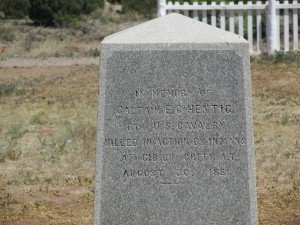
Other finely restored structures include the commanding officers quarters, the captains quarters and general barracks structures. Visiting Fort Apache is definitely a trip back into history.
Another excellent stop to make is to the Kinishba Ruins. The ruins are a National Historic Landmark and are located just four miles west of the fort. The Kinishba Ruins are what remains of a pueblo village that was once occupied by ancestors of today’s Zuni and Hopi pueblo tribes. The site was initially excavated during the 1930’s and was partially rebuilt. This historic site dates back to 1200 to 1400 A.D.
Each year there is an opportunity to attend the annual Apache Song and Dance Celebration at the fort. Arts and crafts are on display as well as food vendors, trail hikes and tours of Fort Apache / Theodore Roosevelt School National Historic Landmark. Information can be found at website www.fortapachearizona.org
For additional information regarding planned events, visit website www.fortapachearizona.org
You’ll also enjoy additional TripsIntoHistory photo articles found on the links below.
Stagecoaches in Black Canyon Arizona
Fort Apache State Historic Park is open daily from 7A to sunset. The Nohwike’ Bágowa museum at the historic park is open Monday-Saturday 8am to 5pm during the summer, and Monday-Friday 8am to 5pm during the winter.
(Content and photos copyright TripsIntoHistory)
